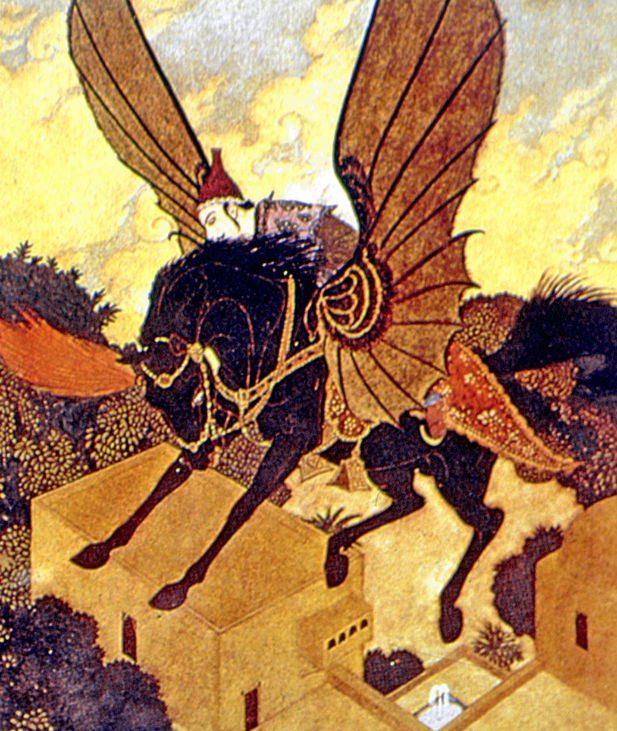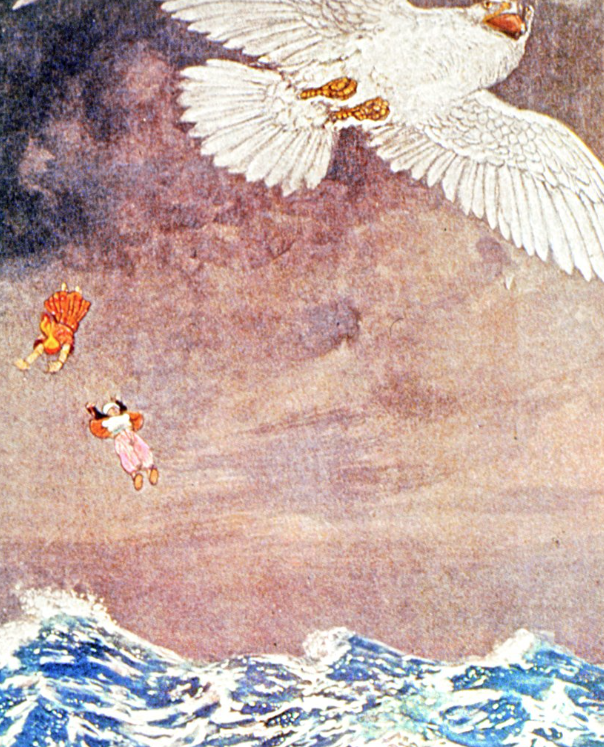This collection of tales, originally known in Arabic as “Elf Leyl and Leyl”, consists of many different stories within a frame story. The framework of the story is briefly as follows: One day Shahzaman, the ruler of Samarkand, goes to visit his brother, the Sasanian ruler Shahriyār, and returns to retrieve something he forgot. When he returns to the palace, he is betrayed by his wife and immediately kills her. In another story, while he was with Shahriyār, he saw his brother’s betrayal of his wife. One day, while the two brothers are walking by the sea, a demon appears with a chest and they climb a tree out of fear.
The ifrit pulls out a woman from the chest and starts to sleep. The woman betrays the ifrit and has sexual intercourse in front of the brothers. After this incident, both brothers believe that all women are unfaithful and Shahriyâr kills his wife when he returns to the palace. After that, he marries a young girl every day and has her executed the next day.

(Aramco World, XXXVI/5, September-October 1985, p. 29)
Three years later, there are no more young girls to marry in the city. The sultan is given the task of finding a new bride, and the older of the vizier’s two daughters agrees to marry the sultan, devising a plan to save women from this fate. Before the marriage, she gets permission to meet her brother and decides to distract the sultan with a fairy tale. The sultan postpones the execution to learn the end of the tale and continues to listen to Şehrezâd. Shahrezād saves the sultan’s life by distracting him in this way for 1001 nights.
There are a total of 264 tales in the corpus and the narrative technique is such that other tales within the frame story can form second or third order frames. The protagonist of one of Shahrezād’s tales may narrate stories that continue in another tale. Among the famous tales are those of merchants, ifrits, porters, the three ladies, the hunchback, Alaeddin’s magic lamp, Ali Baba and the forty thieves, the sailor Sindbād and his adventures.

(Aramco World, XXXVI/5, September-October 1985, p. 28)
The origin, authorship and writing date of the Thousand and One Nights have occupied many researchers, but no definitive conclusion has yet been reached. Some tales are thought to have passed into Arabic from a Persian corpus called “Hezâr Efsâne”. The names of the characters of the frame story and the names of Iranian culture found in other tales indicate this. It is also thought that some of the tales come from a geography stretching from Iran to India. Factors such as the diversity of the tales, the fact that they are set in different places, the naturalistic style and language errors indicate that they are by different authors. It is accepted that these tales are in fact folk tales that have circulated among the people over the years and that they contain many elements from the folklore of Eastern cultures. The Thousand and One Nights is an important source for the study of the literature, history, history of civilization, folklore and social structures of the Muslim Eastern nations.
Although there are several editions of the Thousand and One Nights, the most complete is the two-volume version published in Bulak in 1835 and reprinted many times thereafter. The tales were translated into French by Antoine Galland and later into English by Edward William Lane, John Payne and Sir Richard Francis Burton. Translated into German by E. Littmann, the tales were translated into Turkish by Ahmed Nazif Efendi during the reign of Sultan Abdülmecid.

